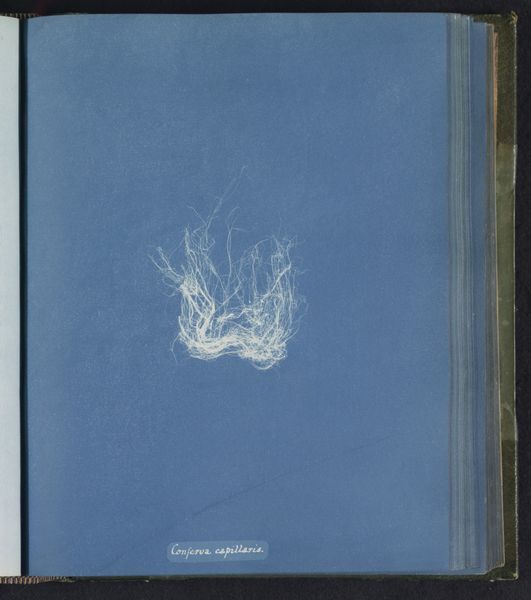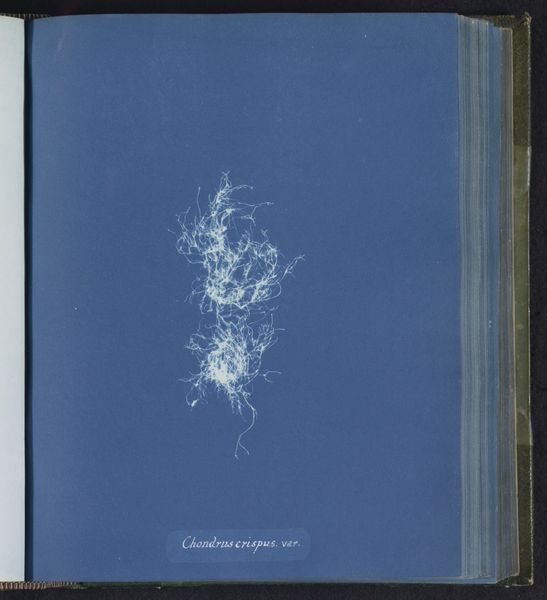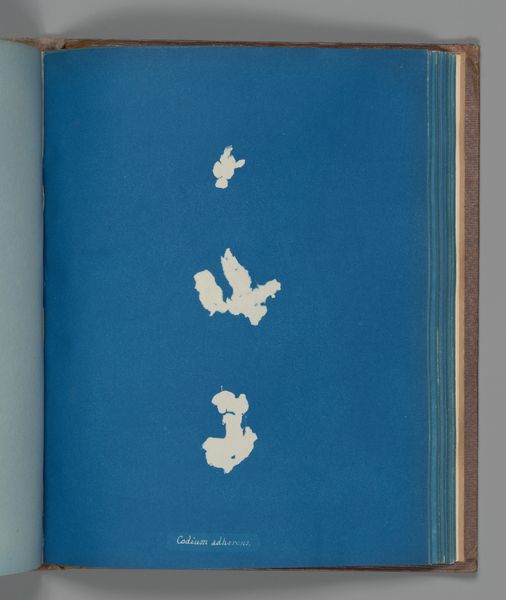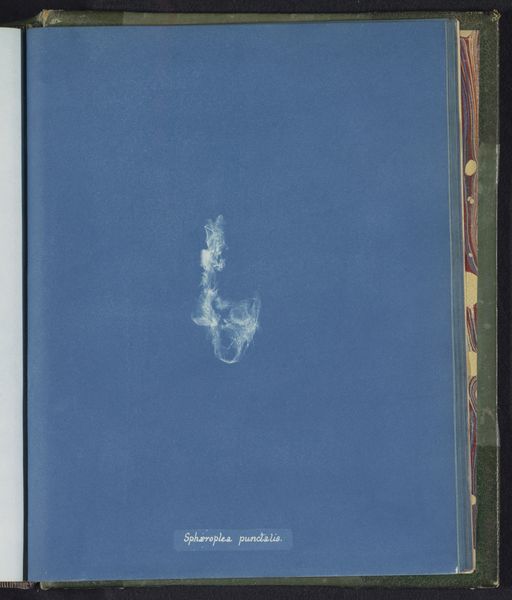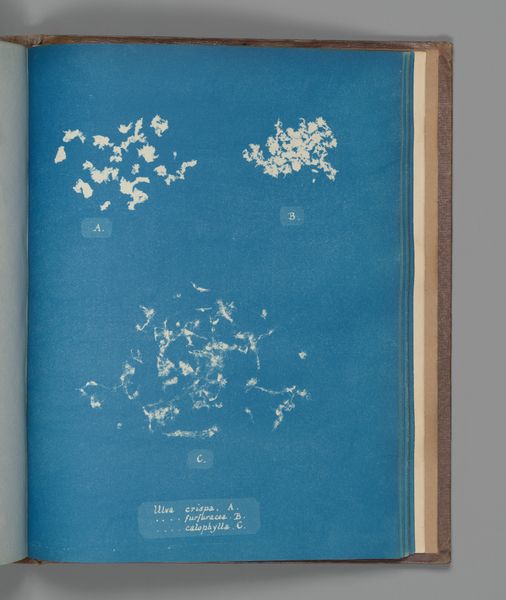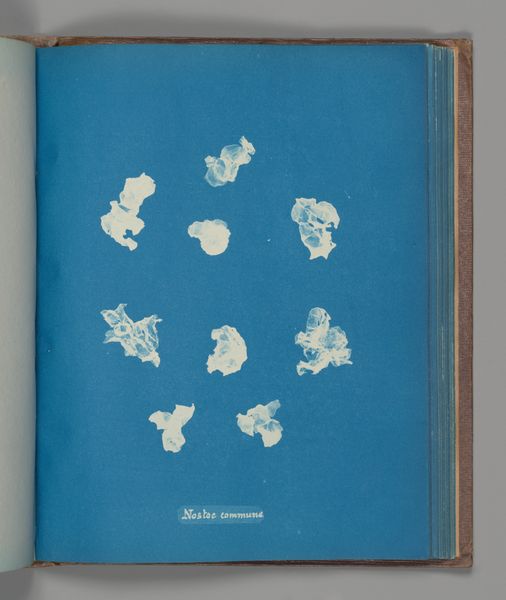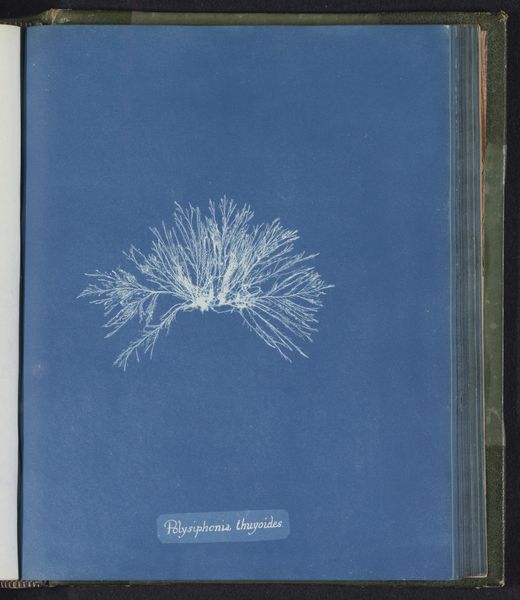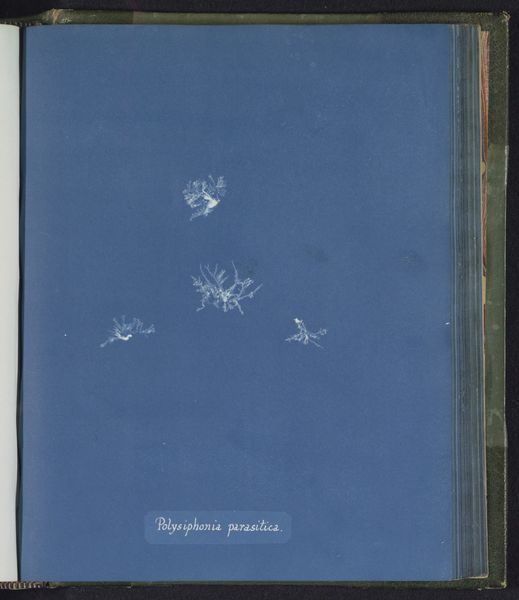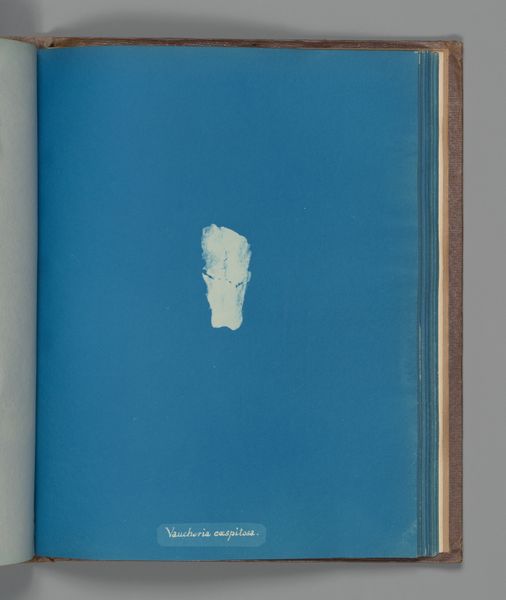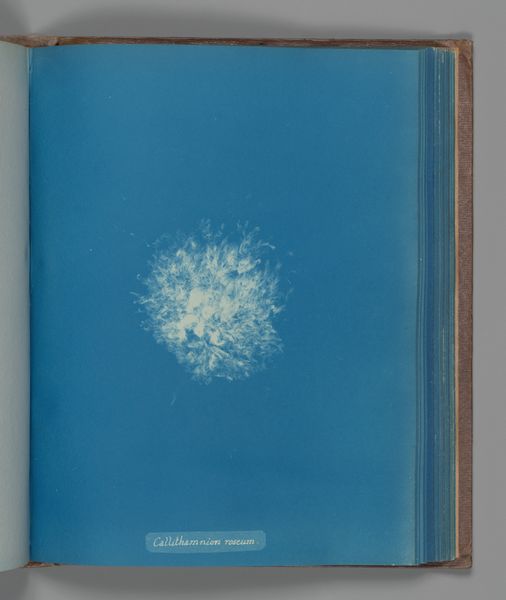
print, cyanotype, photography
still-life-photography
cyanotype
photography
naturalism
Dimensions: height 250 mm, width 200 mm
Copyright: Rijks Museum: Open Domain
Curator: Anna Atkins created "Lichina confinis" sometime between 1843 and 1853 using the cyanotype process. Editor: My initial thought is that this feels incredibly delicate. The white lichen floating against that rich Prussian blue almost feels celestial, like a constellation map. Curator: Indeed. The cyanotype process, a very early form of photography, gives the print its distinctive color. Atkins, a botanist, placed specimens directly onto coated paper and exposed it to sunlight. The result is a photogram, a silhouette rendered in light. Editor: As a woman working in science at that time, she was automatically pushing boundaries. Using photography – itself a nascent technology – as a tool for botanical documentation is fascinating. It wasn't merely about illustration, it was about asserting a presence in the scientific community dominated by men. Curator: Absolutely. Consider the formal composition, though. The scattered arrangement of the lichen across the page creates a dynamic, almost asymmetrical balance. Her method speaks to naturalism; these aren't posed or manipulated specimens. Editor: Precisely, it evokes an almost elegiac mood; an invitation to reflect on scientific and social confines, not to be confined by them. It is more than mere representation, but a profound statement of resilience and scientific contribution during the Victorian era. Curator: I agree; there's a beautiful marriage of scientific accuracy and aesthetic sensibility at play here. Editor: Seeing this print reinforces for me that art and science aren’t separate spheres, but powerful allies for knowledge and progress.
Comments
No comments
Be the first to comment and join the conversation on the ultimate creative platform.

